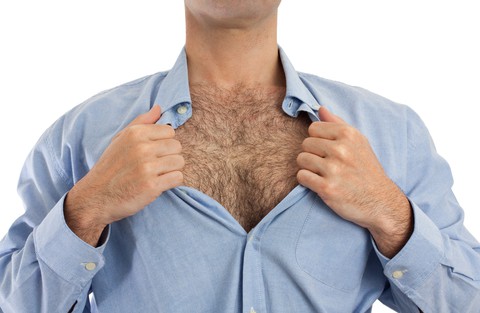It’s no secret that having a lot of body hair can make you feel warm in cold climates due to its insulating effect. However, it can be uncomfortable in warm regions because it leaves you feeling hot. That said, some people may wonder if being hairy makes you sweat more.
Being hairy doesn’t make you sweat more. The eccrine glands, which are responsible for most of the sweat, are unaffected by the amount of hair on your body. Some hair follicles may contain apocrine glands in hairy areas, such as the groin and armpit, but they contribute only a tiny amount of sweat.
The rest of the article will discuss common misunderstandings about the relationship between hair and sweat. I’ll also explain the factors that affect sweat production and why many people think that being hairy makes you sweat more.

The Relationship Between Hair and Sweat Glands
Numerous myths are associated with sweating. For instance, many believe that hairy people sweat more. Similarly, you’ll often hear that people who are obese or overweight tend to sweat more than those with average weight. Needless to say, both claims are inaccurate.
Although having much hair can make you uncomfortable because of how well the strands cling to moisture, it doesn’t necessarily mean the volume of sweat released increases.
It’s also worth noting that the areas of the human body that sweat the most, such as the palms and the soles, don’t even have hair.
To better understand how sweating works, I’ll explain the differences among the three types of sweat glands in the human body: eccrine, apocrine, and apoeccrine.
Eccrine Glands
These are the major type of sweat glands in the human body, responsible for over 90% of sweat produced per day. Eccrine glands open directly to the skin surface and release sweat containing salt, urea, and other minerals.
A baby has eccrine glands all over their skin and reaches the maximum number by the time they reach around three years old. As the skin expands with age and diet, the sweat glands spread out and become less dense.
Regardless of how much hair a person develops as they get older, the number of sweat glands remains the same.
Apocrine Glands
These glands produce watery sweat, but since they open into the hair follicle, the liquid becomes mixed with the secretions of the sebaceous gland. However, not all hair follicles have apocrine glands.
Although these glands are present in the area around the breast, they’re predominantly found in hairy regions, including the following:
- Armpits
- Pubic area
- Scalp
Apoeccrine Glands
Recent studies have revealed the existence of a third type of sweat gland that contains some key characteristics present in eccrine and apocrine glands. As such, it was called the apoeccrine gland.
Unlike the other sweat glands, the apoeccrine glands are found only in the axillary region. However, they open directly to the skin like the eccrine glands. Their secretions are also independent of hair volume or density.
Does Body Hair Increase Sweating?
Body hair doesn’t increase sweating. Excessive sweating is due to several factors, such as high temperatures, emotions, medical conditions, age, and physical activities. However, thick and long body hair can retain more moisture, making you feel like you’re sweating more.
Let’s see how the following factors stimulate sweating:
- High Temperature. The human body regulates temperature by releasing sweat. The body then needs to release heat for the moisture to evaporate from the skin. As a result, sweating allows the body to cool down during hot weather.
- Emotion. Fear and anxiety are strong emotions that send signals to the brain. In response, the heart pumps blood faster and the body temperature rises, resulting in sweating. People who often experience panic attacks also exhibit similar symptoms.
- Medical Conditions. Some people have a genetic condition called hyperhidrosis, which makes them sweat excessively even without external factors. Numerous medical conditions, such as acromegaly and tuberculosis, can also cause excessive sweating.
- Age. Women undergoing menopause typically experience higher body temperatures. Depending on the individual, it can increase sweating. Those who don’t sweat more experience hot flashes.
- Physical Activity. On average, a healthy adult produces around 5–10 liters (1.3–2.6 gallons) of sweat per day with moderate activities. On the other hand, extreme activities can generate up to 3 liters (0.8 gallons) of sweat per hour.
Final Thoughts
Having much body hair can make you feel warmer but doesn’t directly stimulate the body to produce more sweat. The body parts that sweat the most when you feel hot include the forehead, the palms on your hands, and the soles of your feet. Interestingly, these areas don’t have plenty of hair (or at all).
So if you’ve noticed increased sweating, consider other possible underlying causes first before thinking about shaving your hair.
Source:
- National Library of Medicine: Anatomy, Skin Sweat Glands
- National Library of Medicine: Physiology of sweat gland function: The roles of sweating and sweat composition in human health
- Healthline: Sweating (Normal Amounts): Causes, Adjustments, and Complications
- National Library of Medicine: Comparative Study of the Composition of Sweat from Eccrine and Apocrine Sweat Glands During Exercise and in Heat
- WebMD: What Happens When You Have a Panic Attack
- Mayo Clinic: Excessive Sweating
- Mayo Clinic: Hot Flashes
